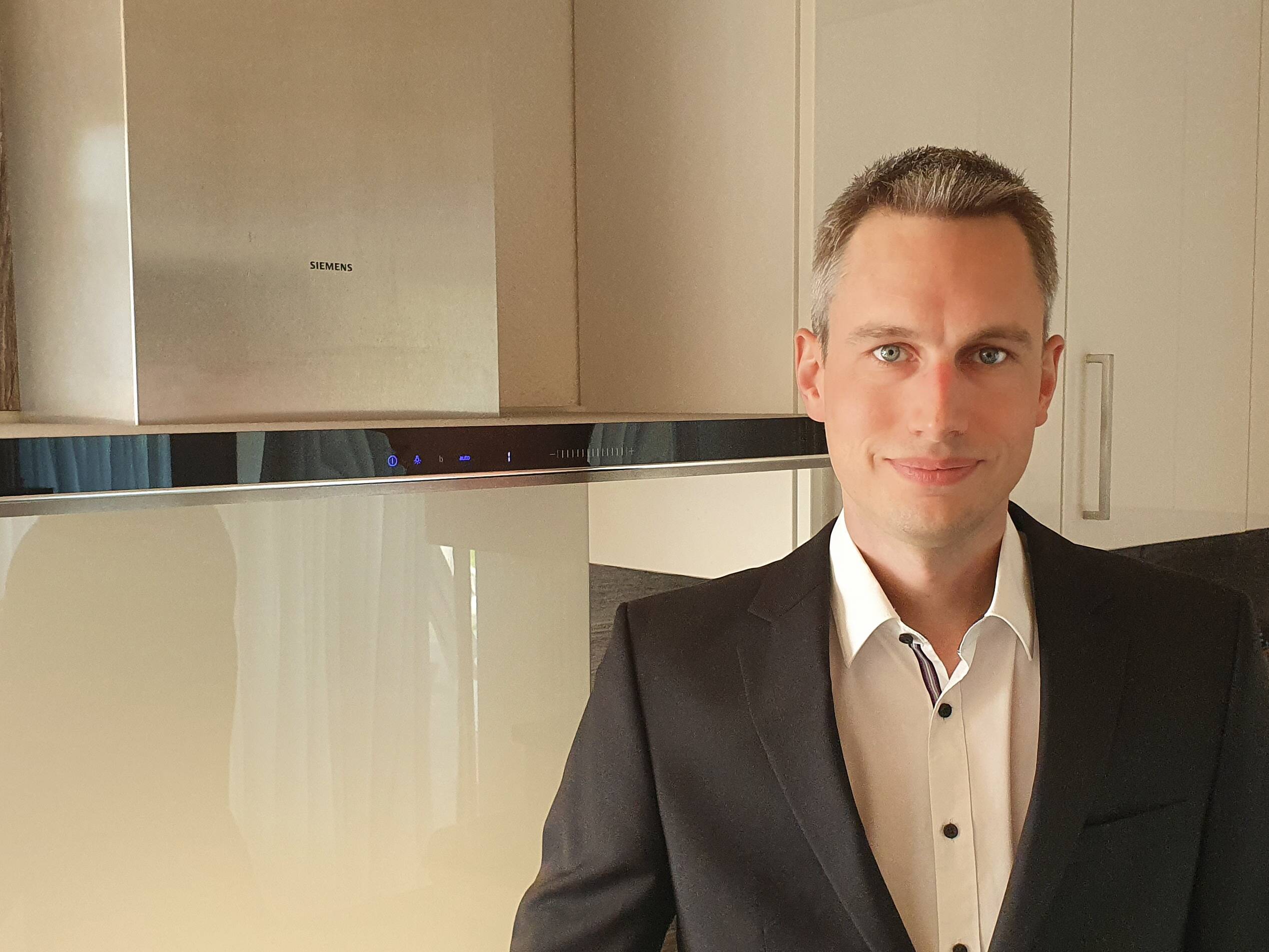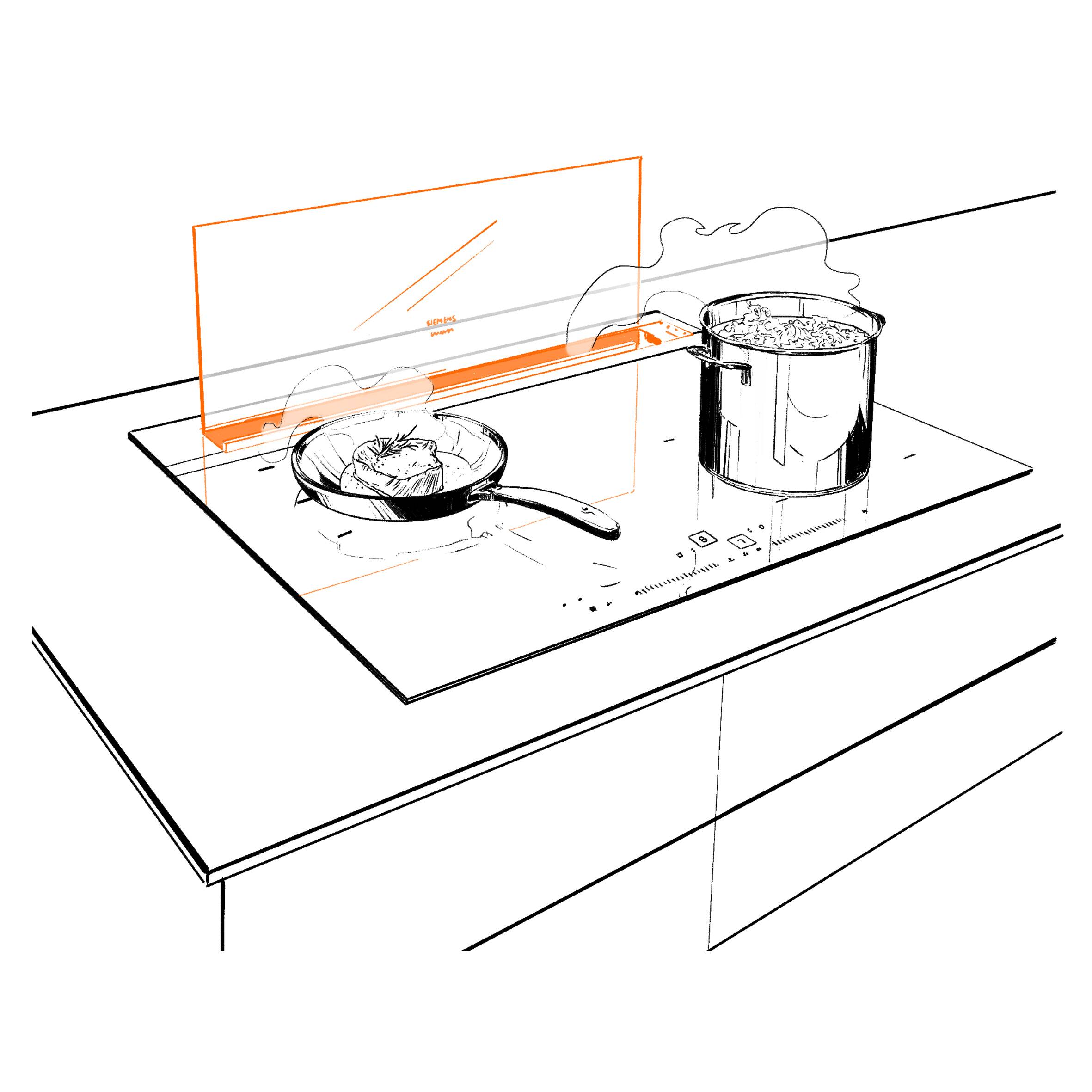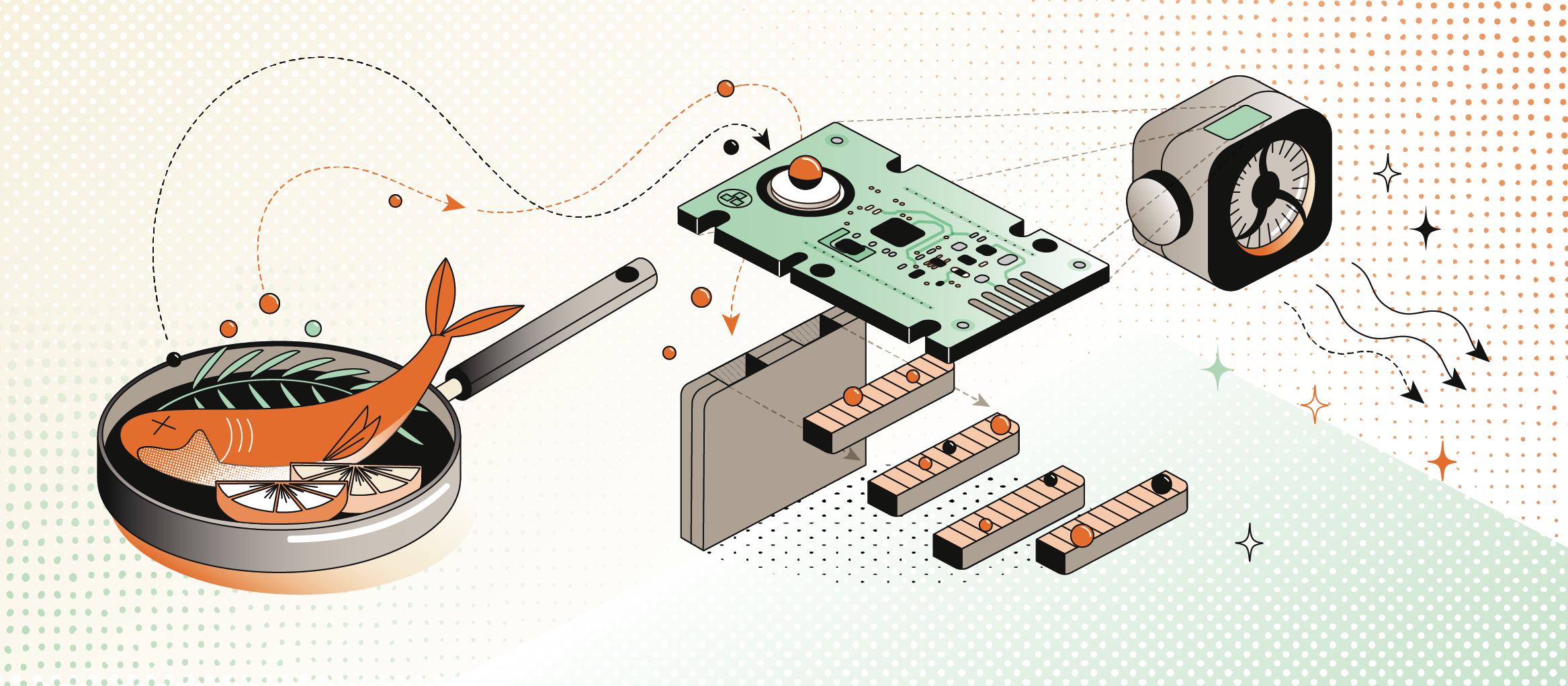How cooker hoods learned to smell
Reading time for this article: 4 minutes
Find out how the increasingly intelligent sensor for cooker hoods, developed by electronics engineer Stefan Schrumpf and his team, truly makes life in the kitchen more comfortable.
It all started more than ten years ago when electronics engineer Stefan Schrumpf wrote his thesis in Bretten, Germany. He described his ideas about how to use sensors in home appliances like a cooker hood. Later, with the BSH teams in Bretten and Nanjing, he developed the hardware and software for these ideas. Today, his team is working on the third generation of the Air Quality Sensor. It has been integrated into different models of cooker hoods from BSH brands like Bosch, Siemens or Neff, for example, and has become increasingly intelligent.

Five reasons BSH's Air Quality Sensor is a breath of fresh air
It generates a pleasant indoor climate without odors.
We no longer hide kitchens in small corners of our homes. The trend is now open concept kitchens and living rooms, which often include a free-standing kitchen island. The place where we cook has become the center of living – it’s where family and friends come together and it’s a social instead of a working room. But how can you cook there, in a comfortable way, without odors? The Quality Air Sensor in the cooker hood is the answer to this question. It detects vapor and odor, from above or behind the hob, and reports the intensity to the fan integrated in the cooker hood. In automatic mode, the sensor activates the fan and sets it at the appropriate level for the amount of molecules in the air. In combination with the fitting circulation filter, the cooker hood cleans the air of odors, vapor, and fat.
It only works when it needs to.
“One of the best features of this cooker hood with the new sensor is that it can turn on and off automatically if it communicates with the hob,” Stefan Schrumpf explains. “It is sensitive to odor molecules and vapor. We could say that it ‘smells’ when it’s needed and then turns itself on.”
Therefore, our consumers can fully concentrate on cooking – or talking to their guests. Another advantage is that while the human nose gets used to a smell and doesn’t notice it anymore after a while, the sensor will always notice. It works until the air is truly clean and all odor molecules are in the filter.
It works quietly and uses as little energy as possible.
When you are in a conversation whilst cooking, you don’t want to have to shout to be heard above the cooker hood extraction. With the air quality sensor, you don’t have to. It makes the fan run at the minimal level necessary. Therefore, it is very quiet and uses as little energy as possible. Whilst earlier models could only run on three preset distinct levels, the new sensor can adapt to any situation depending on the amount of odor molecules and vapor in the air.
"Homes will become more and more connected in the future, which will give us more and more options to make cooker hoods even more intelligent and our consumers lives will become even easier.” - Stefan Schrumpf
It considers your personal needs.
What if I want to adjust the performance myself? With the Home Connect App, consumers can manually influence the automatic mode and the sensitivity of the sensor. Furthermore, the app reports if the filter needs to be cleaned, regenerated, or changed – and it provides instructions and a link to the online shop to order the right filter. If you would like even more convenience, you can link the cooker hood to Amazon Alexa and talk to it: “Alexa, start the cooker hood!”
It loves teamwork.
The air quality sensor alone is already great. With a little help from its friends, it is unbeatable: The fry sensor for example supports it by ensuring that nothing burns in your frying pan or pot. The cook sensor watches from within the cooktop so that your food doesn’t boil over, and, thanks to the bake sensor, your cake in the oven won’t overbake and smell burnt. Together, the sensors make life at home more convenient so that consumers can make the most of their free time!
Outlook: The air quality sensor truly makes life in the kitchen more comfortable. But is this the end of the story? Stefan Schrumpf smiles: “Not even close to it. Homes will become more and more connected in the future, which will give us more and more options to make cooker hoods even more intelligent and our consumers lives will become even easier.”
Watch the video to see how the PerfectAir Sensor for example works:
Read more about BSH products that were ahead of their time.





